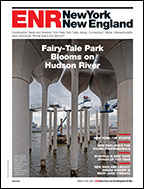Colorado State University Ready to Begin New Stadium Fundraising
Colorado State University received approval last week to move ahead with a fundraising campaign for a new stadium on the university’s main campus.
The CSU System Board of Governors, which oversees the three-campus system, affirmed a recommendation from CSU President Tony Frank to begin an effort to raise private support for at least half the cost of the proposed $246-million stadium. In addition to an aggressive campaign to raise money, the university will move ahead with detailed planning for the stadium project.
Since early 2012, CSU has been examining whether it is feasible to build a new stadium to replace the more than 40-year-old Hughes Stadium. A 15-person panel – the Stadium Advisory Committee – worked for seven months and delivered a report to Frank in August that identified a potential site, highlighted funding options, examined parking, noise and neighborhood impacts, and captured public sentiment.
While the Stadium Advisory Committee determined it was feasible to build a stadium on campus, Frank ultimately decided whether CSU should move ahead with the project. In an e-mail to campus on Oct. 1, Frank explained why he believes it would be in the long-term interest of Colorado State to proceed with plans to build a new stadium on the university’s main campus.
Looking ahead 50 years, he wrote that “a well-maintained stadium located on the main campus, now with decades of tradition behind it, would be a great benefit to the university, providing a familiar venue for athletics, graduations, freshman convocations, band days, and other large events. And so, with that long view in mind, I support our moving forward to attempt to build such a facility.”
Some of his reasons include:
• It would become an iconic multi-purpose centerpiece for the campus, hosting football games, athletic events, graduations, convocations, concerts and other large events.
• It would help build a deeper connection between the university and students.
• It would foster stronger ties with alumni who would return to campus to attend football games and other events.
• It would be a useful tool in marketing the university to a broader audience.
In making the recommendation, Frank reaffirmed his commitment that no state general funds, no taxes, no student fees and no tuition dollars should be used to build the stadium. Rather, he said that about half the money – $125 million – must come from private donors and that the other half could potentially be financed from revenues generated by the new stadium.
Such a financing package would likely require additional action by the Board of Governors at some point in the future, and Frank said he will not take such a plan to the board unless he was “extremely confident” the combination of private dollars and stadium revenues would cover the cost of the building the new stadium – and that the funding plan was fully in keeping with the long-term plans for the growth of the university.
Frank set a two-year fundraising window based on the deferred maintenance needs at Hughes Stadium, which requires a minimum of $30 million in maintenance over the next decade. If a viable financing plan for the new stadium cannot be achieved within two years, the fundraising efforts will be suspended so the university can make the necessary investments in Hughes so that it remains a sound venue for CSU football.
During the fundraising period, CSU will continue with the next phase of planning the stadium project, including development of a program plan and adding it to the university’s master development plan. The university will also continue working with the city of Fort Collins and important stakeholder groups, such as neighbors and community members, to work through and mitigate any potentially negative issues.



